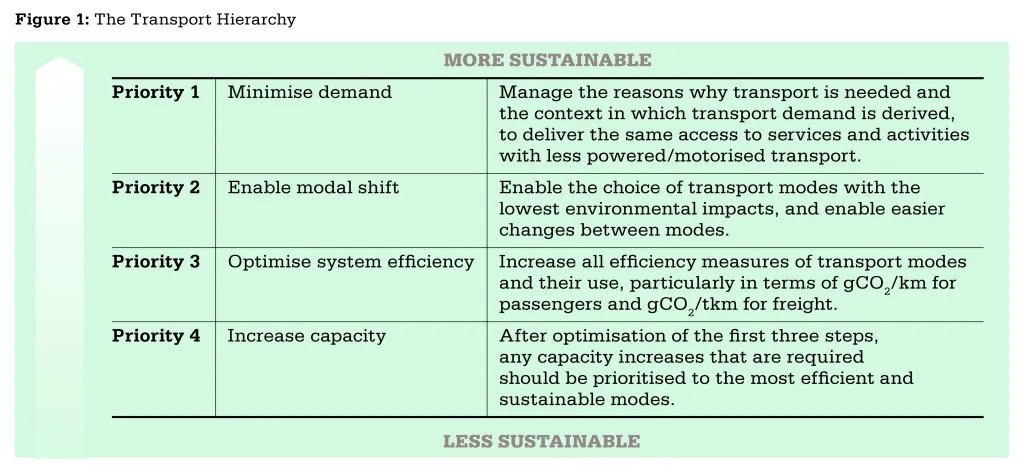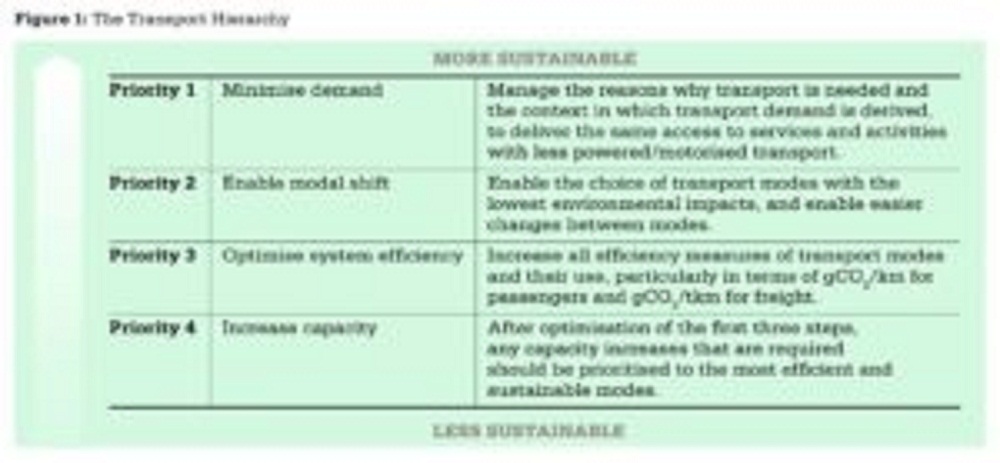If you’ve engaged in the thinking around sustainability even from afar, then you’ve probably come across the energy hierarchy, water hierarchy, and waste hierarchy. These are simple models (often illustrated as pyramids or inverted pyramids) which help designers, planners, policymakers, and the rest of us make sensible decisions about managing energy, water, and waste. They do so by helping us focus on the most effective solutions first, from both a technical and cost perspective.
In the case of waste, for example, the hierarchy prioritises reducing waste (i.e., avoiding it, to begin with), reusing it if we cannot avoid creating it, and then finally recycling it if we cannot reuse it anymore.
While recycling might be the first thing that comes to one’s mind on the topic of waste, the hierarchy reminds us that there are a number of topics to address first before we even begin to think of recycling. Energy and water hierarchies are similar: they focus first on reducing (or eliminating) demand, and only once the demand is optimised do they consider supply options, conventional or otherwise.
It\’s about time we start thinking about Transport in the same way.
While it does not have a Wikipedia entry like the other sustainability hierarchies do (superficial yet telling evidence of its novelty), the transport hierarchy does, in fact, exist as a concept. The Institute of Mechanical Engineers does a good job of describing it in its policy paper published in 2013.
Similar to the other hierarchies, a sustainable transport hierarchy focuses first on reducing (or eliminating) demand and then on shifting the demand to more sustainable options. Only then does it address optimising system efficiency and increasing capacity.

Why is a Transport Hierarchy helpful?
Transport is a topic that is always present in sustainable planning and development discussions due to its significant impacts, but only in a limited way.
For example, sustainability rating systems generally focus on a few aspects mostly related to enabling the modal shifts to walk, cycling, or public transport [Priority 2]. Increasing the number of public transport stops, providing bike racks, and allowing for comfortable pedestrian paths initiatives, which are generally promoted by rating schemes.
There are typically sustainability credits that address providing amenities (e.g., groceries, ATMs, clinics,…etc.) in the vicinity of residential or commercial buildings. However, these tend to be either very easy or very difficult wins as often the land-use decisions have already been made.
From the other perspective, transport planners and engineers generally have limited involvement in sustainability discussions. Even worse, many of them have been appointed to ensure the roads are big enough to take all the cars, period.
My experience of master planning in the Middle East is that transport discussions generally start (not end) at increasing capacity [Priority 4]. In some instances, optimising system efficiency [priority 3] is partly considered. Minimising transport demand and enabling modal shifts [priorities 1 and 2] are usually entirely overlooked.
Even when developments are intended to be places for ‘live, work, and play’, this philosophy often does not get fully implemented and does not make its way into traffic models.
The result: ‘sustainable’ car-dependent developments with bicycle racks and electric chargers and cities with ever-expanding highways.
Is it that simple?
Of course not…
Sustainable transport is about a lot more than just carbon or even air emissions (which could potentially be covered under optimising system efficiency). There are other environmental aspects to be considered, such as noise and visual impact.
More importantly, there are salient social and economic factors involved, such as accessibility, social inclusion, employment creation, maintenance costs, and land valuation.
This is probably why sustainable transport has managed to escape the hierarchy model. It is also probably why sustainability professionals have generally stayed away from delving into holistic transport planning and instead touched on specific transport aspects – increasing the number of bus stops or promoting low-carbon fuels.
Nevertheless, a sustainable transport hierarchy can add a great deal of clarity to planning and design discussions, along with the other sustainability hierarchies, even if only as a starting point.


For those interested in a more academic outline of the priorities, this paper on the Sustainable Mobility Paradigm is a must-read:
https://www.researchgate.net/profile/David_Banister/publication/223541451_The_sustainable_mobility_paradigm/links/0deec525e3677252e5000000.pdf